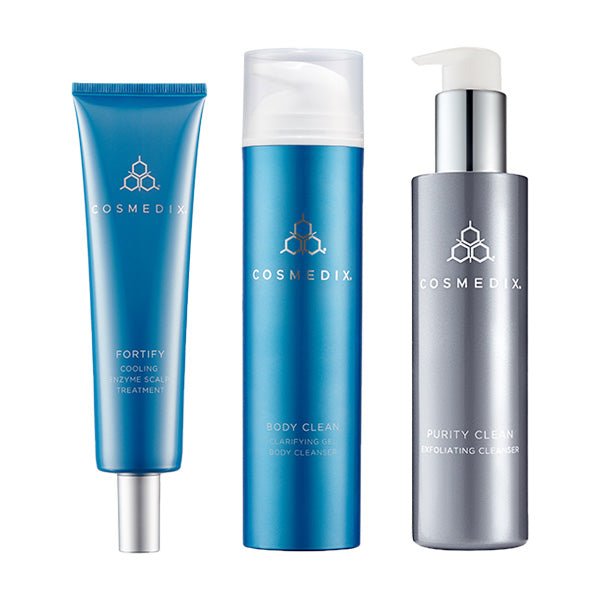The Truth About Photodamage In Less Than 1,000 Words
Photodamage, commonly known as sun damage, occurs when the skin is overwhelmed by ultraviolet (UV) rays, resulting in scar tissue buildup and dermal thinning. The changes that the body incurs, however, are not evident on the skin's surface until years later. As skin ages, visible effects of photodamage appear as fine lines, wrinkles and age spots. Treating photodamage is a process that requires a long-term management program including lifestyle changes, stress reduction and improved nutrition.
Neglecting to shield sun-sensitive skin from harmful UV rays can easily exacerbate photodamage and counteract any progress made with resurfacing and restorative products. To ensure enduring results, a broad spectrum UVA/UVB sunscreen should be applied daily for maximum defense, like Peptide-Rich Defense with SPF 50.
The skin is already under attack from inflammation caused by dietary and environmental stress. Damaged skin is even more susceptible to free radical assaults. Hence, photodamage treatment requires a specialized support system. Serums, masks and cleansers containing reparative ingredients like vitamin C, antioxidants, enzymes, peptides and growth factors provide indirect support to the skin by helping to increase cellular turnover, inhibit melanin production and reduce inflammation.
Chirally-correct skin care with ingredients such as tyrosinase inhibitors, antioxidants, pepoxide and encapsulated retinol are extremely effective for driving results. Naturally, that program begins with rebuilding the skin. Only after the layers of dead skin are removed can fresh, new skin cells thrive. But because photodamage-afflicted skin is highly sensitive, promoting healthy change is crucial. Professional metabolic peels, such as those offered by COSMEDIX professional skincare, are designed to gently stimulate fibroblasts €” skin-rejuvenating collagen and elastin fibers €” without the irritation and excessive peeling of traditional chemical peel treatments.
Neglecting to shield sun-sensitive skin from harmful UV rays can easily exacerbate photodamage and counteract any progress made with resurfacing and restorative products. To ensure enduring results, a broad spectrum UVA/UVB sunscreen should be applied daily for maximum defense, like Peptide-Rich Defense with SPF 50.
The skin is already under attack from inflammation caused by dietary and environmental stress. Damaged skin is even more susceptible to free radical assaults. Hence, photodamage treatment requires a specialized support system. Serums, masks and cleansers containing reparative ingredients like vitamin C, antioxidants, enzymes, peptides and growth factors provide indirect support to the skin by helping to increase cellular turnover, inhibit melanin production and reduce inflammation.
Chirally-correct skin care with ingredients such as tyrosinase inhibitors, antioxidants, pepoxide and encapsulated retinol are extremely effective for driving results. Naturally, that program begins with rebuilding the skin. Only after the layers of dead skin are removed can fresh, new skin cells thrive. But because photodamage-afflicted skin is highly sensitive, promoting healthy change is crucial. Professional metabolic peels, such as those offered by COSMEDIX professional skincare, are designed to gently stimulate fibroblasts €” skin-rejuvenating collagen and elastin fibers €” without the irritation and excessive peeling of traditional chemical peel treatments.





